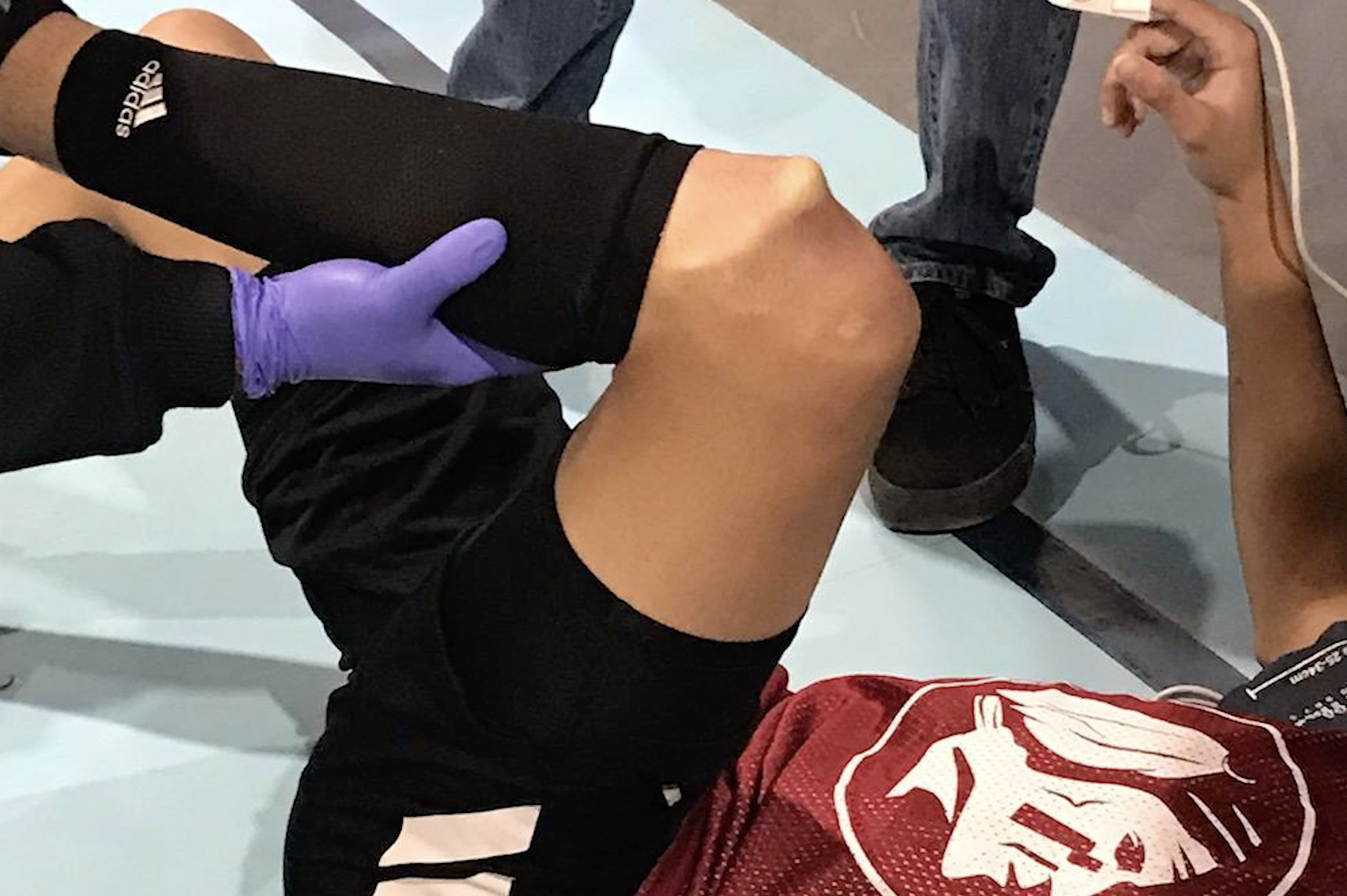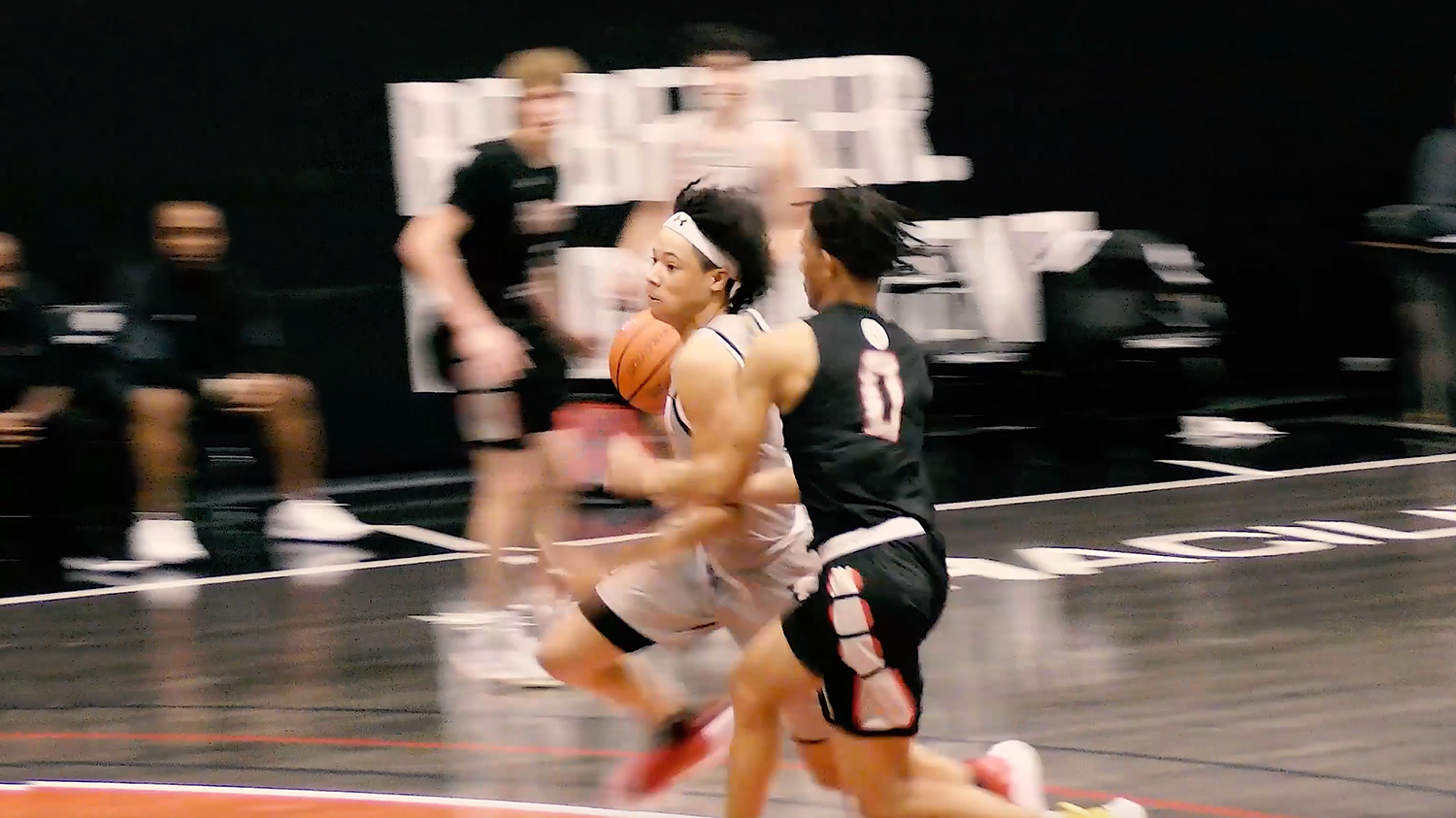By: Jarad Brisbin, PT, DPT, CAFS

JJ’s popped knee moments after it happened.
Returning to sport following a traumatic injury can be a tricky process, no matter the injury. There is no “protocol” or template to follow, there are countless variables to account for and there is no universal test to determine readiness for sport. Over the last year, I had the opportunity to coordinate the rehabilitation of an elite high school basketball player, JJ. JJ was initially fearful of bending his knee, placing any weight on his leg, and even simply walking. He has now returned to playing basketball at a high level. This journey had many challenges mentally, physically, and spiritually but our goal was always to get JJ back on the court. Before I met JJ, I treated his coach as a patient. So, when JJ was injured, his coach reached out and said “Hey, I have a kid who needs to come see you, he fractured his tibia.” I figured it was going to be a cut-and-dry case with steady progress and he would be back to playing basketball games at 5-6 months no problem.
I was wrong. It was not your typical fracture; it was a tibial tuberosity avulsion fracture sustained when JJ went to jump and dunk a basketball while playing in a game. When looking at this injury you can see it looks similar to Kevin Ware’s injury sustained during the 2015 March Madness Tournament. It turns out the mechanisms of injury were similar. Can you imagine returning to play after such a traumatic injury? Throughout JJ’s recovery, there were many ups and downs and progress was very slow. The emotional toll of this case due to the slow progression of knee range of motion and lower extremity strength made it difficult to manage alone. Frustration grew as normalizing basic mechanics and returning to basketball did not come easy nor as quickly as we had hoped. Daily treatment was required to make it through this process. It took 30 minutes of soft tissue mobilization, 10-20 minutes on the recumbent bike, and another 15 minutes of stretching and range of motion training at the start of each session just to warm up his leg. Then there was another 45-60 minutes spent on training proprioception and balance, improving lower body strength, progressing plyometrics and agilities appropriately, and then another 30-45 minutes spent performing basketball skills and shooting. This was a lot to take on physically. This called for a safe environment that could instill confidence in the process, creativity, and team collaboration to progress and to keep JJ engaged and optimistic. The best approach was through teamwork, to ensure the appropriate time was spent on soft tissue treatment to facilitate a range of motion and to monitor all training variables including proprioception and balance, strengthening, agility, cardiovascular endurance, plyometrics, and sport-specific skills. All of these variables had to be scaled appropriately to ensure tissues were getting the appropriate stimulus and recovery to optimize function and return to playing basketball.
In sport and in daily life, it is impossible to entirely prevent injuries, as there are too many variables outside of our control. However, it is important to control the variables that we can because when ignored they can lead to injury or athlete breakdown. Read more from Jarad on the Spooner Blog “Stuck on the Bench: Common Basketball Injuries“
The immediate rehabilitation team consisted of multiple players from the Spooner Sports Institute staff, including the strength and conditioning team, multiple physical therapists, a certified athletic trainer, and highly skilled physical therapy technicians to provide this environment. The team extended beyond our wall to the medical doctor, outside massage therapists, coaches, and outside strength and conditioning coaches. The key to keeping all individuals involved and informed was concise and consistent communication so everyone was on the same page. JJ spoke to the environment at the Spooner Sports Institute, stating, “Everyone comes in with positive energy, is outgoing, and makes it easy to come in and put in the work to get better, even on days when you’re hurting or tired.” Week to week it was hard to see progress as it took nearly 8 months to get full knee flexion range of motion. However, having a supportive team in which every team member was saying the same thing and on the same page contributing ideas and minor cues throughout the process helped ensure that we stayed on track. Our ability to work together directly and indirectly ensured that we were doing everything we could to provide the most effective care and intervention. This provided an environment to allow the body to recover physically, the head to recover mentally, and the soul to recover spiritually leading to a successful journey back to playing the sport that he loves.
Are you interested in learning more about the Spooner Sports Institute? Do you have an athlete who needs elite care and guidance in their journey back to sport? Schedule an appointment or give us a call. We’d love to get you back to doing what you love.

